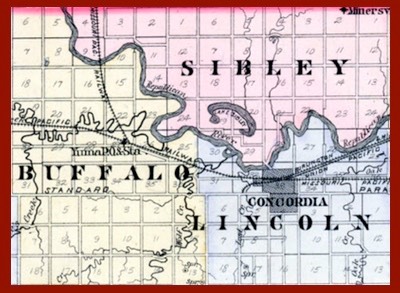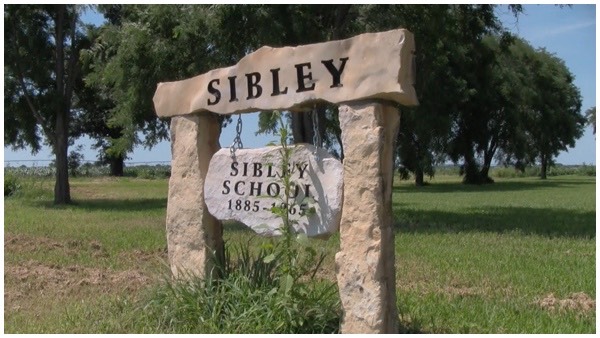A Trip to Lake Sibley
A few hours’ drive brought us to the lake and town. So soon as our pony was “staked out,” in company with Mr. Hay, one of the proprietors of the town, we took a stroll to the lake. Passing through a very rich bottom covered with a thick growth of underbrush, we came to the lake. We confess we were agreeably surprised both as to its size and beauty. It seems to be wider than the river, and some two miles long. We think it runs nearly parallel with the river and is about three miles distant from it.
About one fourth of a mile north of the lake the town of Lake Sibley is located. Like most western towns it is laid out in blocks, with but one really business street.
In company with Messrs Carnahan and Hay, we drove to the top of Sibley butte, which is about two miles north from the town; it looks as if it would be difficult for a team to draw much of a load to the summit, but the ascent was so gradual that we were at the top almost before we knew it. Looking toward the south, the view was most magnificent. In front, a few miles distant, were the lake and river, whose banks were skirted with trees clothed in green. Looking toward the east, we could see Sibley and Hay creeks, which rising north, wended their way to the Republican.
The view was one of the most beautiful we ever beheld in Kansas, and reminded us of the valleys of the Pacific coast.
Perched in the center of the northern tier of townships in Cloud County, Kansas, Lake Sibley was sometimes described as the last outpost of civilization before travelers in the middle and late 1860’s encountered the “Dark Meadows” where unwary buffalo hunters and hapless emigrants often drew their final breath. No one was sure how many sets of bleached bones might lie concealed in that windswept sea of waist-high prairie grass. The environs of the town was where Army units and various local militias reconnoitered often enough, before going out to battle Indians, that it was briefly known as “Fort Sibley.”

While beating the bushes for subscribers for his paper, published at Clyde, the editor of the Republican Valley Empire paid several visits to Lake Sibley in 1870, describing it as a “thriving little village, lately sprung up, and is very beautifully situated near the picturesque old lake, after which it is named.” The clear, cool waters of the ox-bow lake, once thought to have been fed by springs, was touted as teeming with “large numbers of the finny tribe.” Climbing Sibley Butte on another expedition, the editor wrote of seeing “a splendid bird’s-eye view of the town and surrounding country for 15 miles; the heavy belts of timber that mark the meanderings of three creeks on the south side of the river, Buffalo, Wolf and Oak. From there can be seen one of the most beautiful landscape scenes that ever gladdened the eye of man or occupied the mind of the artist.”
The lake and its companion town were not named after explorer George Sibley, surveyor of the Santa Fe Trail, but, according to townspeople interviewed by the editor of the Empire, a career soldier named Henry Hopkins Sibley. This might seem unlikely, given the fact that Henry Sibley is chiefly remembered as a brigadier general in the Confederate Army, but Sibley had served his country previously in the War with Mexico, in the effort to quell the violence in “Bleeding Kansas” in 1856, and the Utah Expedition of 1857, otherwise known as the Mormon War.
The Utah Expedition was the proving ground for Henry Sibley’s chief invention, the Sibley Tent, a patented conical field tent inspired by the Plains Indian wigwam. His tent was a great success, and Sibley was to be given five dollars for each unit manufactured for the Army. However, when war broke out, the Louisiana native saw a fast track to promotion while following his heart. He resigned his commission, joined the Confederate States Army, and missed out on the fortune he would have reaped when the U.S. Army ordered 44,000 of his tents. Sibley probably consoled himself by opening another bottle. He was a notorious alcoholic who may have been sleeping off a bender in a military ambulance during his army’s victory at Valverde in New Mexico Territory.

Like his invasion of the Southwest, Sibley’s namesake town and lake in northern Kansas also came to little. The lake dried up, the town of Concordia grew up nearby, attracting the attention of the railroads, and the population of Lake Sibley drifted away to find better prospects.
A school building has been preserved on the southern fringes of the old townsite, and a limestone monument alerts passersby to the hopeful and energetic village that once was.